|
by Patrice Green Herbalists always say that everything starts with the gut, meaning that if your digestive system is working optimally, so too will everything else. This past fall I became obsessed with making bitters. Bitters help stimulate the digestive system to optimize the body’s ability to process food and absorb nutrients. It is amazing to me how much of a difference just a few drops of a balanced bitters formula can make to one’s digestive health. A perfect example of when bitters are helpful is either before or after a large meal, like Thanksgiving dinner. Bitters are also great to use during the winter months, when our systems are bogged down for a variety of reasons. Often weather precludes us from being as active as we’d like. We also don’t have the same variety of fresh greens and vegetables in our diets, and we’re more inclined to eat heavier stews and foods during the winter months. Bitters help stimulate one’s metabolism, helping with weight loss. They are prized in Ayurvedic medicine as a way to manage a sweet tooth. Here are some of my favorite bitters: Gentian Root: Gentian is the premier bitter herb. It can take anywhere from 7-10 years for the root to mature for harvesting. It grows in high altitudes and was used as the chief flavoring for America’s first soft drink, Moxie soda. Its distinctive flavor is not for the faint of heart. It also should be used with caution by anyone with ulcers. It is also an emmenagogue, anti-parasitic and has been used to balance high blood pressure. Cacao: Think chocolate – raw, pure, unsweetened and minimally processed and you have cacao, the source from which chocolate is derived. Very high in antioxidants and minerals, cacao is a natural bitter that adds a wonderful “finish” to any bitters formula. Dandelion Root: Dandelion greens are wonderful in spring salads or steamed as a side dish, but why not use the root year round? In addition to using it in liver teas, the root can be added to bitters formulas with great results. Artichoke: Artichoke stimulates the flow of bile from the liver. It’s been used to stabilize blood sugar and blood pressure, as well as treating nausea, arthritis and liver issues. There are several other foods and herbs that can be used in bitters formulas, such as the dried peel of citrus fruits like oranges and lemons, or dried lavender and vanilla bean. You can use rose hips, apricots, cherries, cranberries, cloves, cinnamon, mace or nutmeg. The only limit is your imagination. I encourage you to think about making your own bitters formula. Experiment! Your body will thank you!  Patrice Green is an Herbal Educator, Certified Aromatherapist, Energy Medicine and Reiki Practitioner and founder of Green Aromatics. She is also the Assistant Director at the Boston School of Herbal Studies. She received her herbal training at the Boston School of Herbal Studies, and shamanic training from Isa Gucciardi, Ph. D. at the Sacred Stream in Berkley, CA. Inspired by time spent among the coastal Redwoods of Muir Woods and its beach, Green Aromatics strives to imbue its products and services with the same resilience, joy and equanimity of these majestic beings. Patrice may be reached through the Green Aromatics website. 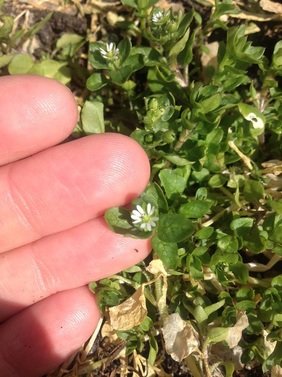 by Melanie Brown I adore plants that we have so fondly deemed “weeds”. Abundant, common, incredibly medicinal, and reaching out to pull us in whenever we walk by them. Stellaria media, or common chickweed, is one such weed that offers a generous amount of healing and nutritional uses. In Latin Stellaria means “little star”; media means “in the midst of.” So here we are in the presence of a plant that has naturalized itself all over the world. It helps soil retain nitrogen and is easily cultivated by spreading the seeds on disturbed earth. To identify look for many small, starry white flowers with 5 deeply divided petals; growing in low, dense, green mats with a single line of hairs on one side of the smooth stalks, then a second line of hair on the opposite side when it reaches the leaf node. When I first encountered chickweed on a hot summer day, with the sun shining high in the sky I was amazed at how cool and moist it felt, as if the patch had just been gently rained upon. Chickweed is sweet, moist, nutritive and cool; it can be harvested throughout its growing period while in flower or not. Regularly harvesting chickweed will inspire it to branch and produce thick regrowth. Using scissors simply snip off the top aerial portion. It contains mucilage, saponins, silica, minerals, vitamins A, B, C and fatty acids. It is also astringent, anti-rheumatic, and vulnerary. When eaten raw in your wild salads it has a bright, clean taste without any bitterness and a touch of saltiness. This demure, sweet plant has been shown to nourish the glandular and lymphatic systems. A tincture made with the fresh plant has the ability to dissolve cysts when taken regularly over a long period of time. Chickweed truly shines when we are encountering fevers, respiratory infections, allergies, bladder or kidney issues, liver stagnation, or digestive distress. Chickweed, used as a fresh poultice, draws out infection while also protecting and healing wounds. A decoction soaked compress or fresh plant poultice is refreshing and healing on dry, irritated eyes with or without an infection. A salve can also be made with fresh chickweed infused oil. Because it has such high water content I recommend infusing it using the “hot infusion method” such as in a crockpot or with a water circulator to prevent the growth of mold. A cream made with chickweed oil applied to eczema relieves itching and redness. Dried chickweed may also be drunk as a nourishing infusion weighing out one ounce to a quart of boiling water, covered and steeped 4 hours or overnight. Herbalists, such as Deb Soule from Avena Botanicals, love chickweed and see it as a most valuable plant to offer those in need of better nutrient absorption. “It is a safe and nourishing herb for a person of any age to take over several months when weak, chronically tired from overwork and stress, traumatized, anemic or recovering from a long-term illness or surgery.” Another respected herbalist, Jim Mcdonald, reports that chickweed, along with plantain (Plantago spp.), is a staple in his all-purpose salve for bug bites, stings, angry red wounds, scrapes, boils, and dry skin. Both Matthew Wood and Susun Weed remark on chickweed’s ability to reduce fat and aid weight loss. Weed points to the high saponin content as the mechanism, while Wood looks to its effects on metabolism and endocrine function. Wood elaborates in his book, The Earthwise Herbal: A Complete Guide to Old World Medicinal Plants, “Chickweed not only subdues heat and lubricates dry conditions, but also regulates water levels and drives off excess dampness and fats. These actions show that it stimulates both sides of the metabolism, building and breaking down, not only through the liver but also through the endocrine system. Thus, it is used to lose weight, not just short-term water weight, but long-term deposits of fats.” As you can tell Stellaria media lends itself to a wide range of healing benefits and food uses. This spring you may find me close to the ground, lying on my stomach in a bed of chickweed, eating, tincturing, juicing, infusing and simply admiring this shining star.  Melanie Brown is a native New Englander who always had an early connection to nature and the outdoors. Together with her four year old son she gathers the ingredients to make small batch plant based body care products which you can find at her herbal apothecary, FIR&ELM. She is a graduate of Boston School of Herbal Studies and currently attending The Gaia School of Healing and Earth Education in Vermont. Her passion is to share and spread the message of community herbalism that lies right outside in our own backyards. by Jenny Hauf I am lucky enough to have the pleasure of collaborating with my dear friend Steph Zabel, the founder of Herbstalk. This past weekend we got together to teach a class called “Waking Up to Spring with Herbs,” in which we discussed how to use, grow, and forage the herbs that support and nurture us as we transition from the black and white months of winter into the dawning deliciousness of spring. 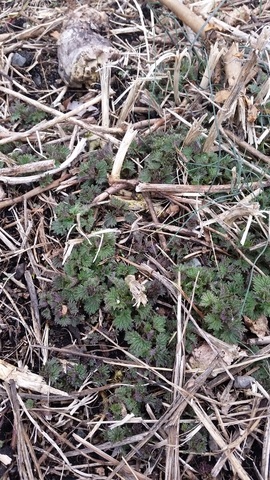 Wild Nettles (Urtica dioica) Wild Nettles (Urtica dioica) Because we always like to have fresh herbs to pass around to our students I headed out to hunt for one of my favorite plant allies, stinging nettle, which we would be discussing in our class. In a trusty nook of Jamaica Plain I walking on a raised path amongst cattails in the lightly flurrying morning, traveling with my eyes to the earth. The shed raiment of autumn was everywhere, crisp and ashy, ready for green growth to cover it and spring rains to hasten its return to mud. As I searched for the tiny first leaves of Urtica dioica—deep green, laced with acid, and tinged purple-red—I discovered other things. There were the crocuses, closed from the cold, but still stalwart and sweet. Long pearls of snowdrop buds dangled in delicate drifts. I also found a single squill blossom, ragged but deeply blue and alive. Bramble leapt over and sidled the path, catching on my skirt and grabbing at my bare knees. Beyond the bramble rose cattails, some still fuzzy with the seed heads they had grown months before, swaying around me. Beyond the marsh were witch hazels, their spidery flowers egg yolk yellow, and a tremendous grandmother of a silver maple with branches tipped in a burgundy haze. Snowflakes occasionally laced through the branches, stalks, and stems as I continued searching, and eventually I stumbled upon my prize: a tiny patch of nettles in miniature, their infant leaves unfanning and little stingers shimmering. Gratefully I snipped a few and laid them in a paper bag. Overhead and throughout the marsh the red-winged blackbirds sang, and I headed home with a handful of brand new life in my arms.  After creating the medicinal herb program at Allandale Farm, Jenny is excited to be embarking on the second season of her own herb farm, Muddy River Herbals. She is thrilled to be offering high quality, sustainably grown herbs to the people of eastern Massachusetts. For more information please visit her website or contact Jenny directly at muddyriverherbals (at) gmail (dot) com for ordering inquiries and herb availability. Muddy River's herbal CSA is currently accepting new members so please visit the website for details. by Jade Alicandro Mace
Cleansing in the spring is a familiar and popular subject. But what about the concept of harmonizing with the spring? Traditional Chinese Medicine (TCM), and especially Chinese 5-Element Theory, provides us with a beautiful framework for understanding the spring and its energetics. When we’re attuned with the natural influences of this season, we can more easily tap into the rich gifts it has to offer. First, a little background. In TCM each season corresponds with an Element and an Organ System. The spring is associated with the Wood Element and the Chinese Liver-Gallbladder organ system (different from our anatomical liver and gallbladder!) and meridians. Understanding this organ/element pair and its associations is a great place to start when it comes to harmonizing with the spring. Keywords and phrases for the Liver-Gallbladder/Wood Element/Spring: Upwards moving energy, yang, growth, clear vision and purpose, decisiveness and decision-making, ambition, hopefulness, starting new projects, productivity Sounds just about right, doesn’t it? by Juliette Abigail Carr
It seems like folks have a hard time making a really good milky oats tincture. When I teach advanced tincture making, we always discuss past “failures” or at least tinctures that didn’t turn out how students expected, since there is more space to learn from our mistakes than from easy successes. Milky Oats is one that comes up often, so I’m going to explain the little tricks to growing it and making medicine. Oat (Avena sativa) is beloved as a restoring, nutritive nervine tonic (medicine whose effects build slowly over time). In women’s health we cherish oat for its properties as a mineral rejuvenator and protector against adrenal exhaustion -- goodbye postpartum depression! Hello restful sleep, coping skills, and an end to feeling stretched too thin, exhausted, and sapped of vitality. As an antidepressant nervine it has a grounding, moistening effect for folks who feel burnt out, dried up, and frazzled. It is a nurturing rejuvenator to the nervous system and adrenal glands, kidney and liver function, and it restores the minerals your body needs for your heart, muscles, bones, and nerve transmission to work well. It bestows a feeling of general well-being to those of us lucky enough to bask in its welcoming green glow. As is common, the tea is a gentler, more long-term builder known for its mineral-related actions, while the tincture is stronger and more known for antidepressant and nervine actions. by Jennie Oceane Edgar Spring brings lovely scented flowers, lime green leaves, and the seasonal migration of birds that left the cold Northeast for their winter homes down South. Spring is also a time when we can step outside of our winter dens with our gathering baskets and walk through the meadows, along the forest’s edge, and even in to the woods to find fresh, abundant, and nourishing food. And for many food foragers, the beloved fiddlehead is a coveted delicacy. Fiddleheads are easily recognizable by their tightly curled tendril tops. They are delicate, elegant, and radiate a sweet, gentle, and peaceful energy. To admire a fiddlehead is to be held in awe of its energy, it’s burgeoning potential to sprout out of the long frozen earth and slowly, slowly unfurl itself to the world. That is, if a delighted forager doesn’t harvest the tops, first. This is why ethical and sustainable wildcrafting is so important – when harvesting fiddleheads, only take about 3 or 4 tops before moving on to the next patch. I never harvest more than 50% of a plant, and this practice ensures the plant will have ample ability to proliferate throughout the future seasons. Furthermore, harvesting living plants is also an exercise in gratitude – giving thanks is a wonderful way to build a relationship to the plant spirit realm, as well as a connection to the earth and ultimately, to ourselves. Together, let’s remember to be thankful for and mindful of the abundant food the wilderness offers us, now when the desolate winter is still a recent memory, as well as in each moment, always. Unfortunately, opinions differ in regard to the safety of consuming certain varieties of ferns. It is difficult to discern which ferns are likely to make one sick, as there are many time-tested instances of people eating fiddleheads from every variety of ferns and faring just fine. Plant identification is very important for any wild food forager, and as a general rule, it is very important to know exactly what plant you’ve encountered and its level of toxicity before you decide to put it into your body. Therefore, I recommend becoming acquainted with the ostrich fern, Matteucia struthiopteris, which is the most well-known and prolific fiddlehead in stores and restaurants. These ferns are easy to identify because of a prominent U-shaped trough running the length of the stem, on the inner side of the stalk. Furthermore, the stalks are smooth, with no fuzz or scales. In mid to late spring, harvest ostrich fern fiddleheads when they are 8 to 20 inches tall. Ostrich ferns will grow to be 3 to 6 feet tall, so the size of the plant is less important than the quality of the top, which should be tenderly firm and bright green, while the leaves of the frond remain unfurled. Simply snap the tops off of the stalk with your fingers. Although the fiddlehead is the coveted portion of the plant, the stalk itself is a juicy, refreshing, and nutritious food, and can be prepared alongside the fiddleheads for a scrumptious meal. And fiddleheads are a great food for the entire family because they are very nutritious, with high levels of vitamins A and C, as well as omega 3 and 6 fatty acids. This means that fiddleheads are a source of antioxidants. They also reduce inflammation and help the body fight the cold and flu. Fiddleheads contain minerals and electrolytes, especially potassium, iron, manganese, and copper. Furthermore, they are a wonderful source of fiber. While these ferns can be eaten raw, it is recommended that you don’t eat them uncooked in large quantities. Fortunately, there are many wonderful ways to enjoy fiddleheads. When I harvest fiddleheads with the intention of cooking them that night, I love to sauté them in garlic for a simple accompaniment to almost any meal. Since fiddleheads are only available for a short time, sometimes it’s nice to preserve and store them so they can be enjoyed months later. I’ve come to love pickled fiddleheads, and I look forward to exploring many different recipes. Let me know how you foraged and fixed your fiddleheads, and many thanks for reading my musings about our beloved fiddlehead, an ephemeral, nourishing food source that grows close to our homes, and close to our hearts.  Jennie Oceane Edgar is the founder of Wildflower Revolution, a spiritual and educational resource that provides herbal products, services, and classes for all women who seek a conscious relationship with their fertility, sexuality, pregnancy, and overall reproductive well-being. Jennie is a doula, childbirth educator, community herbalist, and Masters candidate at Harvard Divinity School, where she studies earth-centered religions and their healing practices. by Henry Kesner I have not been able to look at a Dandelion the same way since 2010. It was two years before the herbalist moved in but her teachings of this most common, local herb had one of the most prolific effects on my botanical mind. I have always loved plants and grew up hiking through forests, working on farms and studying/protecting plants in the Northeastern and Southwestern parts of our country. I have always understood their necessity to our ecosystems and the health of our world. That said, and despite this appreciation for our natural world, I was still rather robotic when it came to dealing with what I then considered ‘weeds.’ It was easy to decipher which plants belonged and which did not (in those days) in prepping and grooming a garden patch or the farm tomato beds or my parents front sidewalk. Like a well-oiled machine I systematically would remove dandelion after dandelion (roots and all) and other ‘weeds’ to make way for other natives to grow. These same yellow, golden-flowered herbs would be yanked and discarded into yard waste bins and compost piles to decay away. When I moved into my city home in 2008, I had the pleasure of re-landscaping our tiny back and front yards. In my attempt beautify the gardens I replaced what was once sod-grass with a series of native perennials and evergreens. In the process I also tended the garden and removed any and all, obvious weeds including the omni-present dandelion – once dubiously dubbed ‘king’ of the weeds. That is until I met the herbalist, and that same herbalist moved in. Through her, I quickly learned the varied uses of this common sidewalk plant. As someone who prides himself on cleaning my plate or making use of the whole animal, I also love the fact that one can make use of an entire dandelion. The leaves can be used as tasty greens for any salad, the flower heads are a sweet garnish for any plate, and the entire plant can be ground into one of my favorite morning drinks – dandy-blend. (Try it warm with a bit of coconut milk!) The dandelion alone is one of many weeds that one could turn into a common meal around the spring and summer. The list goes on and on but I will save this list for future posts, and those herbalists teaching at Herbstalk…. Today, if you drop by my garden you will find it much wilder looking than when I first moved in, with dandelions scattered about. I look at them even today as I write this and they seem so different now from when we were first introduced many years ago. They sprout up around March and April, announcing the arrival of spring all through the garden and around the foundation of my home. While I leave most (if not all) in place, I still pick dandelions from time to time. I wash them, dry them and they eventually end up in my kitchen and then in my belly.  Henry Kesner is a founding member of Herbstalk, where he brings his event & operations management skills to the planning committee. A huge fan of the natural world, he has always found ways to serve as a voice for plants and animals of all kinds. For Henry, Herbstalk is a perfect way to educate a wide audience about the power, use, and wonder of the plants that surround us on a daily basis. Submitted by Zoe Keller of One Beet. Hello Herbstalk community! It’s a treat to be sharing one of my recipes with you today. Pesto is one of the best herb delivery vehicles around. It also happens to be completely delicious and incredibly versatile. I’m a sucker for the old standby, basil pesto, but also love to get creative with new pesto creations (garlic scape pesto, and three herb pesto are two of my favorites). The possibilities are endless! I recently tried my hand at dandelion pesto and the results were terrific. I used the pesto to make delicious little appetizer crostinis, but it can also be slathered on sandwiches, eaten with eggs, blended into hummus, and enjoyed straight from the jar with a spoon. It easily keeps for 2 weeks in the fridge and can be frozen for up to a year. It doesn’t get much better than that for preserving the fresh, wild food of the season. Dandelion Pesto Ingredients:
Directions (10 minutes): Blend all the ingredients in a blender or food processor until smooth and creamy. Feel free to add a dash of water if your pesto needs to be thinned. To make the crostinis, toast slices of French bread or use crackers as the base. Spread with a thin layer of dandelion pesto, top with a slice of manchego, parmesan, or romano cheese, and warm in the oven for 10 minutes until the cheese melts. I brought these to a dinner party with friends and they were a total hit. Even the kids were gobbling them up! And of course I couldn’t help myself from reminding everyone of the medicinal properties of dandelions while we were eating them. Once an herbalist, always an herbalist! So, why are dandelion greens good for you? As with many foods that have a bitter flavor, they have a strong cleansing and detoxifying action in the body. In addition, dandelion is high in minerals, such as potassium and calcium. It helps the liquids of the body move freely, which can release blockages and aid in flushing toxins out of the system. In particular, it supports the liver, kidneys, and bladder – all of which can benefit from a spring-cleaning this time of year. After a cold winter of eating sturdy, nourishing root vegetables and heavy, warming dishes, it’s time to lighten up. Our bodies start to crave spring greens, fresh food, and smaller meals. And it’s important to listen to the body and follow these clues about what to eat. Spring greens are one of the healthiest foods after a cold and sluggish winter. They offer a mega-burst of nutrients, cleanse the body, and are energetically lightening. Eating dandelion is a gentle and natural way to invite the benefits of detoxification and the energetics of spring into your life. If you’re looking for even more dandelion, try my garlicky dandelion greens + farmers egg. Enjoy!  Zoe Keller is a Boston-based health coach, foodie, herbalist, and general wellness warrior. Her blog, One Beet, is dedicated to celebrating the goodness of food through recipes that maximize flavor and nourishment. Submitted by Felix Lufkin. White pine, Pinus strobus, is a tall evergreen tree native to the American north-east. It is easy to identify with its dark black / brown, deeply and widely furrowed bark, its straight trunk and upright aiming branches. White pine, like many other pines in the area, offers a number of different edible and medicinal uses. Since it is accessible year round, it’s a great friend of ours in the winter – when wild foods are more difficult to come by. White pine is a fast growing tree if given the opportunity. It often germinates and grows in large, uniform stands after fires clear patches in a forest. Most pines in the north east have been cut since European contact, though some old growth beings remain – while not as tall, they are the east coast’s version of redwoods, along with American chestnut – growing to at least 150 feet in height and 6 in diameter. How to ID white pine: Bark: White pine bark is dark black with a sort of frosted gray hue. It has wide ridges and deepish groves. It’s not scaly, or shaggy. The bark of the younger branches is quite smooth, with a greenish black color. Cones: White pine’s female cones are the familiar pine cones of the north-east, roughly the size and shape of medium cucumbers, and dark brown. The male cones are small, like small pickled gherkins – smaller than a baby carrot, and more dense. They are both less scaly than spruce cones, and much bigger than hemlock cones, which are just the size of grapes. Needles: White pine needles are in clusters of 5 and are about as long as a playing card. Just think of the five letters in W-H-I-T-E. Red pine needles, in contrast, are in bunches of 2, thicker, and as long as hot dog. Pitch pine needles are in bunches of three and can protrude from the trunk itself. Appearance: White pine has a distinctive, stately appearance, especially when viewed at a distance. It’s branches aim out and slightly upward, like a person with spread arms, lifted up and soaking in the sun. It’s easy to ID them on a ridge even miles away. Its branches are ‘whorled’ on the stem, meaning, many of them radiate out from a single part of the branch they sprout from – different than alternate oak branches, or opposite – aligned maple branches, for example. Whorled branches are somewhat uncommon. Food / Medicine uses: Edible needles: The needles are tasty, aromatic and sour. While a bit chewy, there’s no harm in nibbling them right of the tree for vitamins and some roughage. The lime-green new needles each spring are very tender, sour, and refreshing. Enjoy them! Otherwise, take a few handfuls of needles per quart of tea. You can boil water, pour over the needles and cover, or, to make a richer, more resiny and carb-rich tea, you can bring the needles and some thin twigs to a boil for a few minutes then let steep in the pot, also covered. They’re loaded with vitamin C and other minerals (4 or more times more than OJ – and what are we doing drinking orange juice in New England?!). They also make an excellent fortified vinegar. Inner bark: The inner bark, peeled like a pale, fibrous wonton wrapper off the outer (smooth and darker) bark, is a great survival food. It is rich in carbs. It will sustain you when other food sources are unavailable, though causes harm to the tree – so just use wind falls or pruned branches only if you need to. You’ll have to stew it to make it tender, but it’s worth the experience. Sap: The sap can be chewed as a refreshing and flavorful gum that freshens the breath. Find a scab on a trunk that is very dry and firm to the touch. If it’s the slightest bit sticky or mushy, it will get stuck all over your mouth. If that happens, just chew a little butter to break it down. Cones: The small male cones and immature female cones can be steamed or boiled as a vegetable when green and pliable. They are resinous, but the female cones do have tiny pine nuts in them. Medicinal uses: The pollen can be gathered and tinctured for ‘upright chi’, for vigor and vim. The soft sap can be used as an antibiotic on wounds and to ‘stitch’ together a ragged wound. The needles are great for winter immune boosting, and can be steamed and inhaled for upper respiratory infections. Practical uses: The pitch can be boiled with fat or beeswax into superglue and is an excellent fire starter. The wood, of course, is used for lumber and to keep us warm. The soft, younger bark can be skinned from branches and folded into baskets or containers which harden, and can be sewn together with flexible pine roots, sealed with pitch, and will be water tight. You can even boil water in them! Permaculture: Korean nut pine can be grafted onto white pine for a fast growing, canopy evergreen nut tree. The normal pine nuts we eat, from pinon or Chinese nut pines, don’t grow at altitudes below 6000′, so this is an interesting new option for forest gardens.  Felix Lufkin teaches nature classes and wild edibles at K-12 schools and works with Help Yourself!, a project that plants public orchards and gardens in the Pioneer Valley. He also offers an on-site butchering service and instruction in central New England with Ape and Ape, Inc. Submitted by Nathaniel Putnam of Psymposia. The divine drink which builds up resistance and fights fatigue. A cup of this precious drink permits a man to walk for a whole day without food. Hernan Cortes, 1528 The winter season is a time for hot cocoa and with Valentine’s Day around the corner, there is more to chocolate than just a sweet treat. Chocolate has many medicinal uses for the body and the mind, as a cardiac stimulant, an appetite suppressant, neurotransmitter enhancer, antioxidant and an aphrodisiac. However, the experience that one gets from eating a Hershey’s mlik chocolate bar versus drinking a brew of raw cacao is truly different. Raw cacao is the dried seeds of the tree Theobroma cacao. The seeds or “beans” are found in the cacao pod that falls from the tree when ripe. The beans are surrounded by a clear/white sweet pulp. This pulp can be eaten as a delicacy but that is a story for another time. The beans are scooped from the pod, and left to ferment and dry in the sun for a several weeks. This process changes the beans from a purple to brown color and the dried beans store better for trade and transport. Each pod contains about 20-50 beans, enough for 3-4 dark chocolate bars. A Sweet History The Swedish scientist, Carl von Linnaeus named the tree Theobroma cacao from the Greek words, “theo”, for god and “broma”, for food. The use of cacao dates back at least to 2,000 BCE and scholars have found drinking vessels from the pre-Mayan civilization, the Olmec, inscribed with “ka-ka-wa”. The word “chocolate” was most likely a word coined by the Spanish during the early conquests so it became known as “xocolatl”, a combination of the Mayan word, xococ (sour, bitter) and the Aztec word, atl (water). To the indigenous communities of Central and Latin America, the chocolate tree provided a cash crop that was used as currency, a tradition documented by Columbus and his crew. One cacao bean could be used to purchase a large tomato or a freshly picked avocado, 100 beans could get you a turkey and 30 would by you a small rabbit. Powdered cacao beans are still used as a drink in modern Central America but the taste is different from the Dutch cocoa that you are used to buying at most grocery stores. The Dutch cocoa is processed using a method patented in 1828 by the chemist Coenaraad Johannes Van Houten in his search to make a new low fat powder. The powder is the pulverized form of a pressed cake that Van Houten made by squeezing the oils (fat) from the dried cacao beans. In order for his powder to mix well with water, Van Houten treated the powder with alkaline salts like potassium or sodium carbonates, a process known as “Dutching”. Most hot cocoa mix is often a combination of the bitter cacao bean powder mixed with refined sugar. The first chocolate bar was produced in 1879 by a Swiss chemist, Henri Nestle and Swiss candle-maker turned chocolatier, Daniel Peters. Nestle figured out the process for removing the water from milk to create a powdered form and Peters then added it to his chocolate. The bar was first marketed under the Peter’s/Cailler brand and later merged with Nestle in 1929. Chocolate in your Body Cacao bean powder contains over 50 chemical compounds, including epicatechins, histamine, magnesium, polyphenols, theobromine, and vitamin C. Of the all the phytochemicals in cacao, the antioxidants, theobromine and caffeine are the most abundant, about 1-3% by dried weight. A diet high in antioxidants is important for cleaning up free radical oxygen molecules that have been shown to damage DNA, promote premature aging, and contribute to an increase risk for heart disease and cancer. Dark chocolate contains more antioxidants, per gram, than fresh blueberries, blackberries and raspberries combined. The additions of sugar and dairy products lower the absorption of the antioxidants in the cacao bean so mix your cacao powder with water or a plant-based milk, like coconut, almond or hemp. Theobromine is a chemical found in about 19 species worldwide including plants like coffee, tea, yerba mate and kola nut. Theobromine stimulates the central nervous system, relaxes smooth muscles, dilates blood vessels and is a mild diuretic. The amount of caffeine in chocolate is small compared to coffee or tea. A 50 gram chocolate bar contains about 10-60 milligrams of caffeine whereas a cup of coffee has about 175 milligrams and a cup of tea varies from 25-100 milligrams. Themobromine and caffeine are more active when the cacao beans have been cooked or roasted and not in the raw nibs form. Chocolate on the Brain Cacao contains three psychoactive chemicals; anandamide, phenylethylamine, and tryptophan. Anandamide is known as the “bliss chemical”. It reacts on the same receptor as the THC molecule found in the cannabis plant but the effect is less powerful. High levels of anadamide can also be experienced as the great feelings of happiness that one gets after vigorous exercise, known as the “runner’s high”. Cacao also contains two anadamine inhibitors. These molecules slow the metabolism of anadamide and allow the feeling of well-being to stick around with us a little longer. Phenylethylamine (PEA) has been marketed as the “love chemical”. Chocolate can contain up to 2.2%. While scientific research has yet to confirm a direct “love” connection, PEA levels are higher in the brain when we fall in love, become sexually aroused and peak during an orgasm. PEA levels are lower in those suffering from depression. PEA increases the levels of dopamine and norepinepherine and affects mental concentration, positive attitude and joy. Tryptophan is an amino acid that aids in the production of seretonin. Cacao powder contains about 0.2%-0.5%. Tryptophan reacts in combination with vitamin B3, vitamin B6 and magnesium (also found in cacao) to form seretonin. Trytophan helps produce other neurotransmitters, like melatonin that promote sleep. Trytophan is heat sensitive, however, so eating raw cacao beans is best way to increase these animo acid levels. Cacao drinks are a major component of Central American shamanism and often in combination with ayahuasa, psilocybe mushrooms, cannabis and some species from the Leguminosae family. Recipes (adapted from Naked Chocolate by David Wolfe): In searching for cacao at the supermarket, there are few things to keep in mind:
Hot Chocolate (makes about 4 cups) 2 cups of almonds, soaked overnight 1/2 liter of water 4 tablespoons of raw cacao powder (nibs or beans) 2 tablespoon of raw agave nectar Blend half the water with the almonds. Pulverize and strain out liquids into another container. Put pulverized almonds back into blender and add remaining water. Blend and strain again. Combine about 1 pint strained almond milk with raw cacao powder and agave syrup. Add hot water for desired temperature, whisk and serve. Dark Chocolate Sauce 4 tablespoons of raw cacao powder (nibs or beans) 3 tablespoon of raw agave nectar ½ tablespoon coconut oil Mix all ingredients until blended. Add more agave for a syrup or coconut oil for a creamier texture. Chocolate Fudge (about 30-40 pieces) 1 cup of pitted dates, soaked in 1.5 cups of water for 1-2 hours 1 vanilla bean 2.5 cups of almonds 2 tablespoons of raw cacao powder (nibs or beans) ½ cup of dried shredded coconut Process all ingredients, including soak water in a food processor until smooth. Press into square pan lined with waxed paper. Freeze for two hours. Remove from freezer and slice into 1-2 inch pieces and place in freezer for at least another hour before serving.  Nathaniel serves as the Educational Coordinator of the Medicinal Plant Program at UMass Amherst. He has traveled to over 15 countries and leads a field study course to Peru on the medicinal plants of the Amazon rainforest. He also writes about ethnobotany, with a focus on plants for mental health and use in psychotherapy. Nathaniel is co-founder of Psymposia, which will be held this year on April 12th & 13th at UMass Amherst. |
Archives
November 2023
Categories
All
|
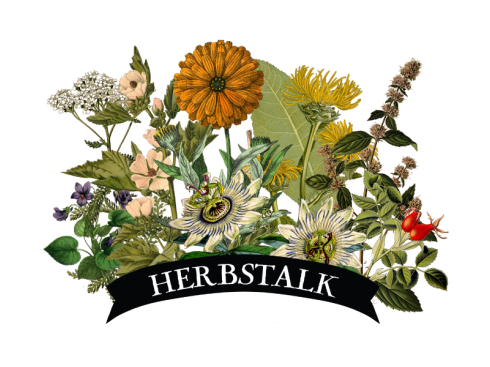
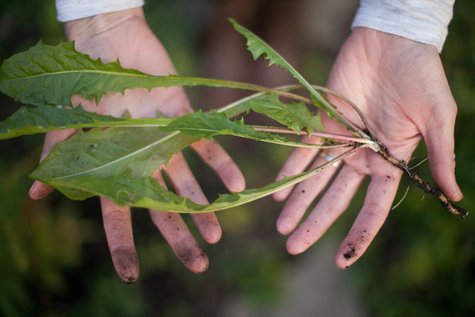
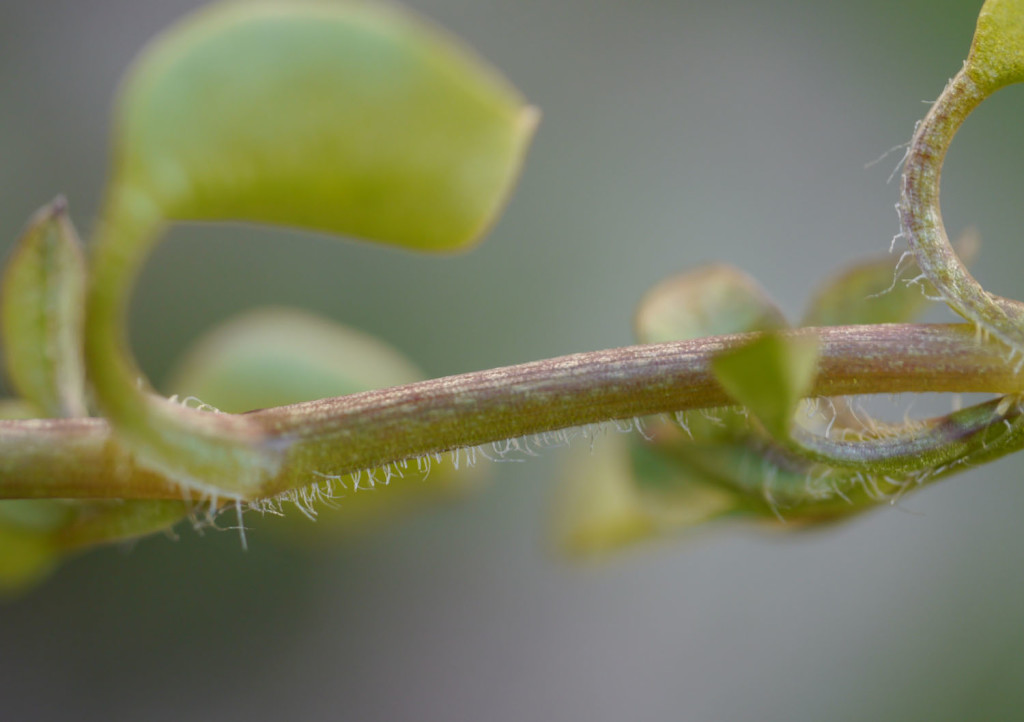
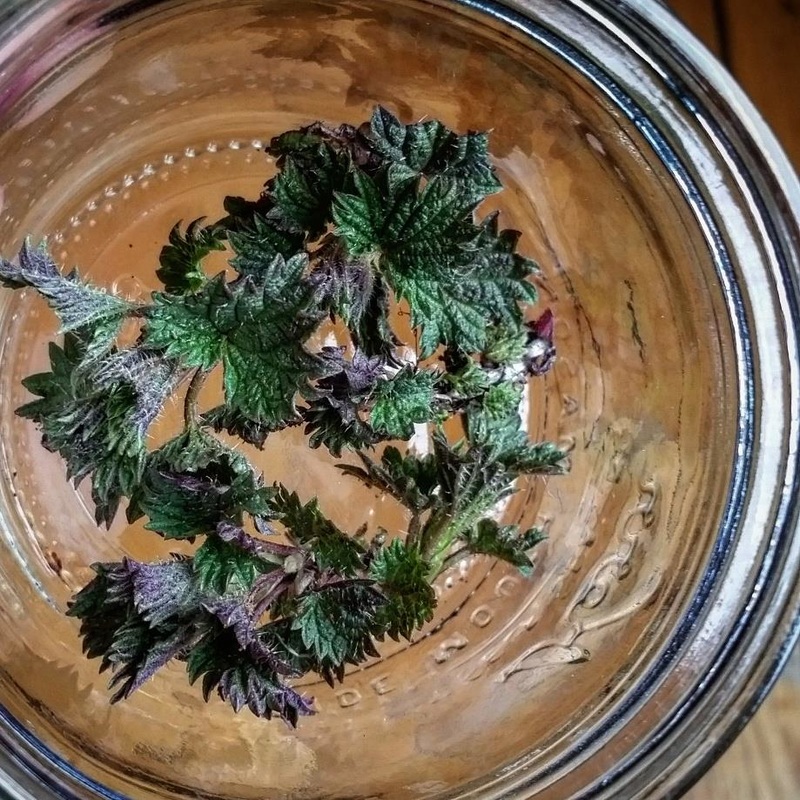
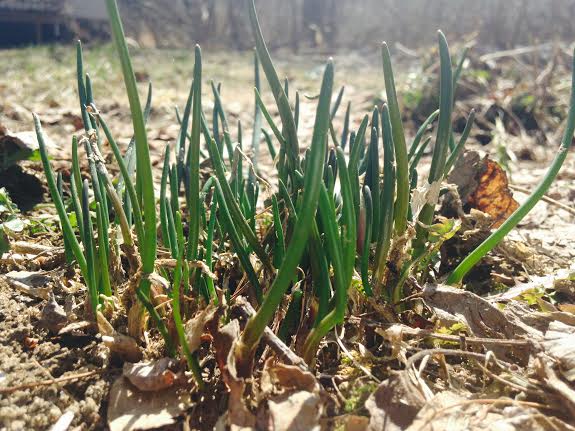
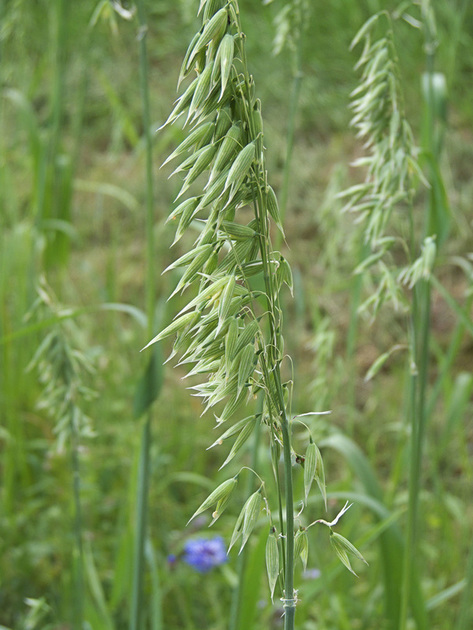
 RSS Feed
RSS Feed